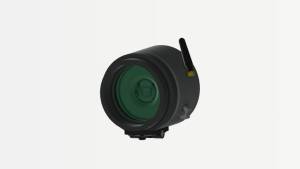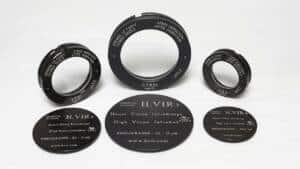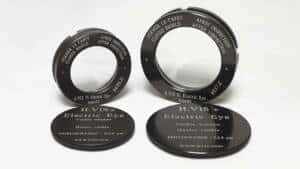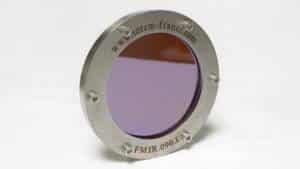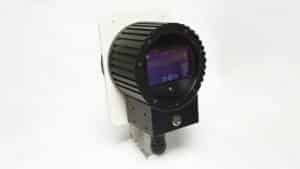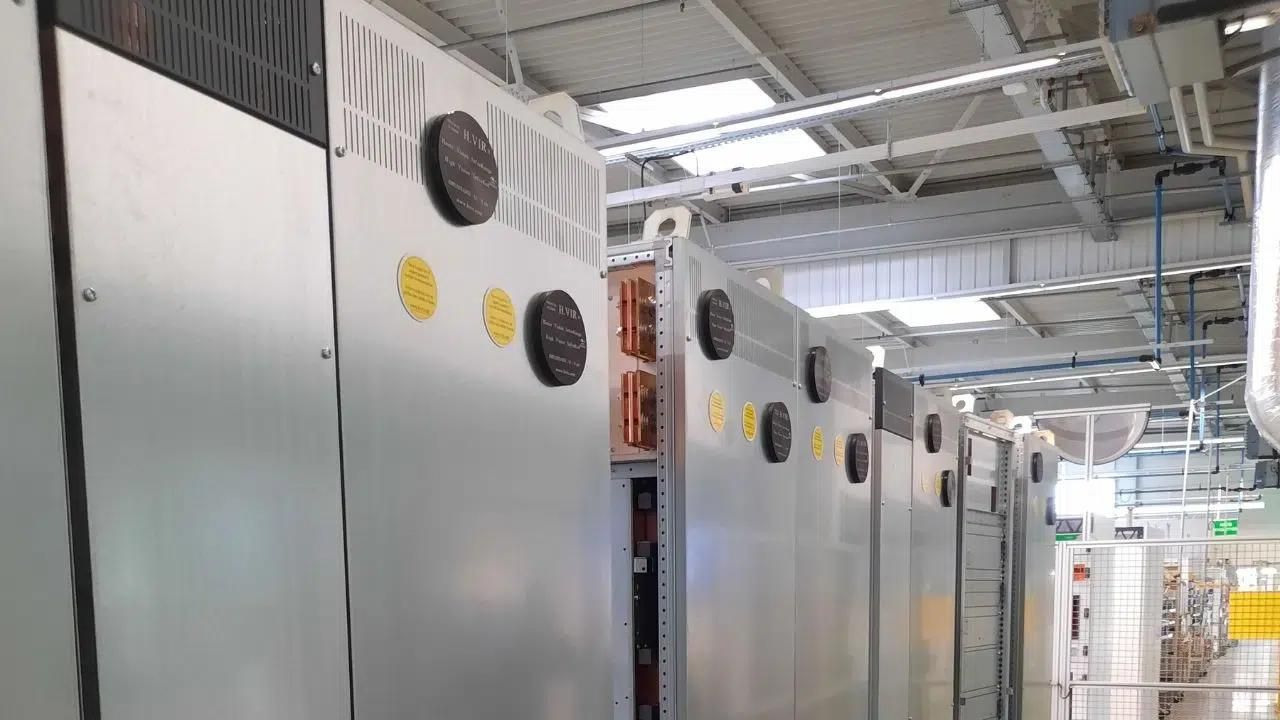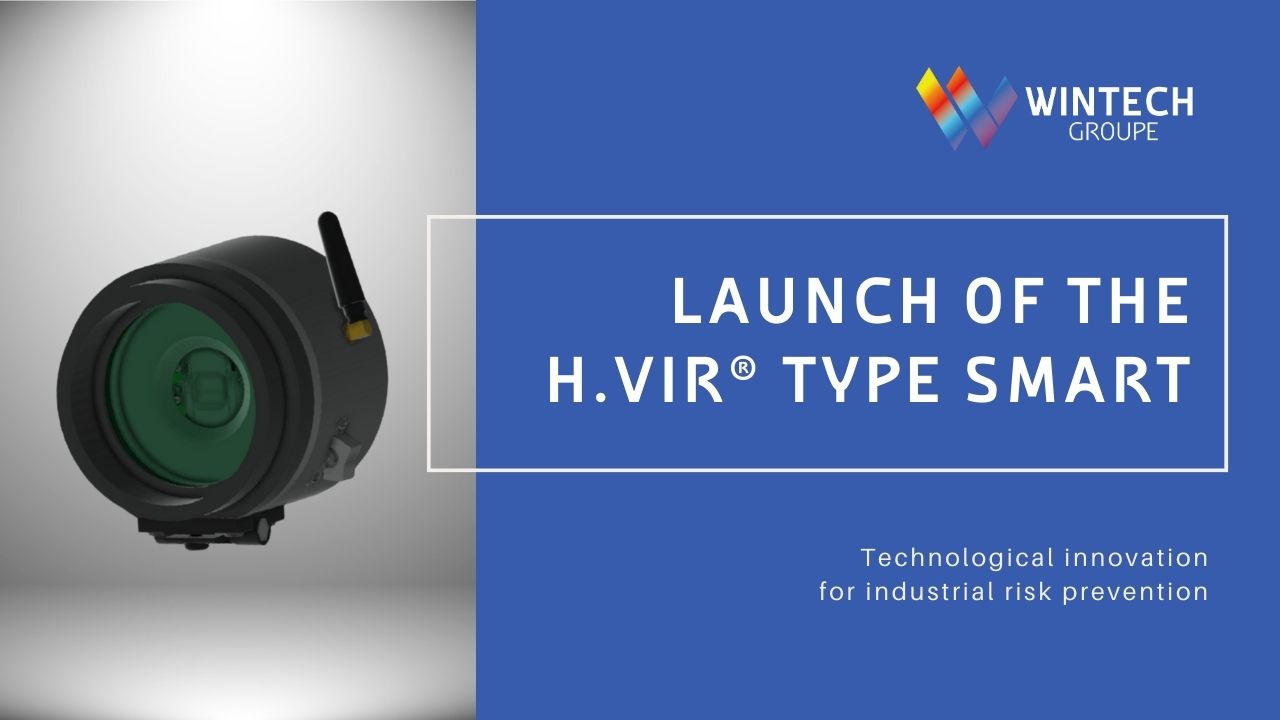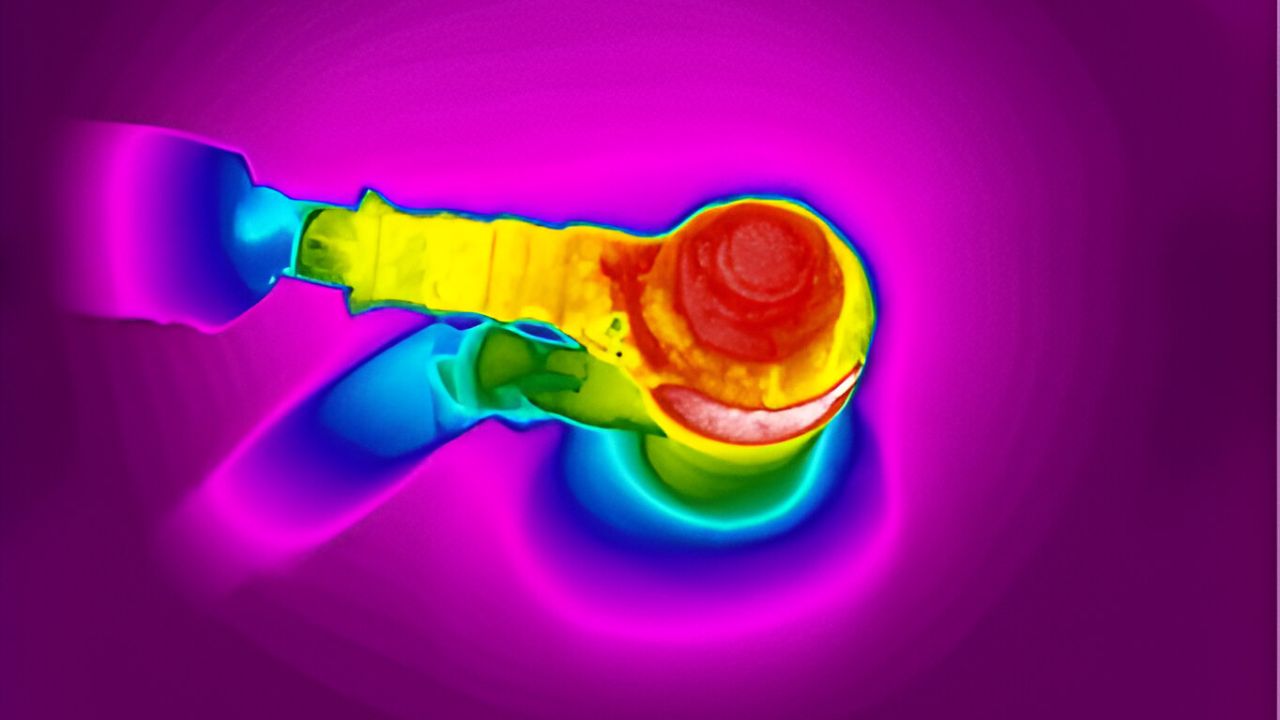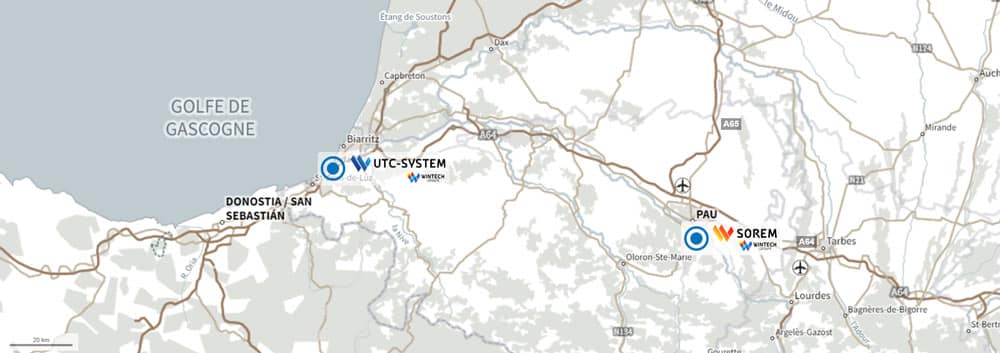IR Windows – Essential for Electrical Inspection
Electrical faults are among the most common causes of fire. In fact, in its industrial and manufacturing property fires factsheet, the US National Fire Protection Association notes that electrical equipment was involved in 24% of structure fires over the period 2011 to 2015. Technical document D19 produced by the French APSAD certification organisation offers a comparable figure, reporting that electrical problems are the source of 30% of the fire insurance claims made by businesses.
Preventing industrial fires with thermography
With this in mind, it is a simple and logical step to realise that electrical installations cause fires only if they generate excessive heat: enough heat, in fact, to cause ignition. This can happen over a short timescale – for example, if a switchboard explodes because of a power surge caused by an electric arc.
Such events are very rare, however. Much more common is a fault with connections on electrical equipment that gradually deteriorate, producing a little heat at first, then more and more over a long period of time until the ignition point is reached, and a fire starts.
This gradual, slow deterioration provides an opportunity. If the heating is detected in its early stages, the source of the problem can be determined and rectified long before there is a danger of ignition. Infrared thermography provides a way to achieve this.
Using a thermal camera to detect hot-spots
An infrared camera is like a normal camera except that instead of working with visible light, it works with infrared radiation or, to put it another way, heat radiation. Provided that its temperature is greater than absolute zero (about -273 ºC) everything, whether it’s a person, an animal or an object of any kind, emits infrared radiation. An infrared camera, which is often called a thermal camera, ‘sees’ this radiation and uses it to produce a picture on a display screen where different temperatures are represented by different colours – as shown in these examples.
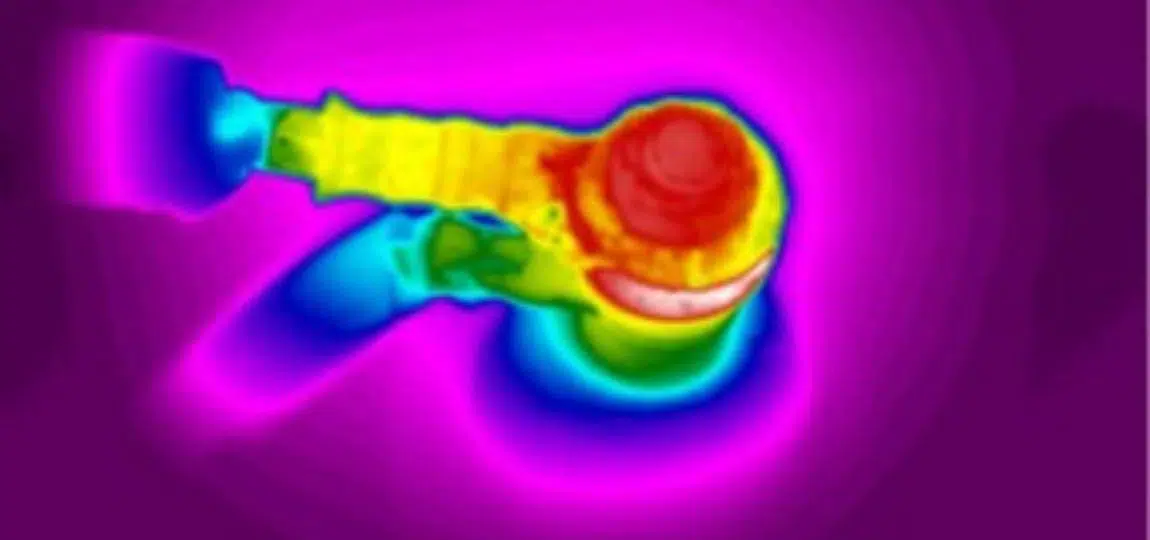
Point a thermal camera at an item of electrical equipment and any abnormal ‘hot spots’ can be seen instantly on the screen. This means that heat-producing faults can be easily found in their early stages, before they become dangerous, so that appropriate remedial action can be taken.
« Thermographic inspection without an infrared window means having to open the protective casing of electrical equipment “
There is, however, a snag. Cameras cannot see through solid material, like the walls and doors of an electrical enclosure. This is a serious drawback because high-voltage electrical equipment generally has its connectors located behind a protective casing that cannot be easily opened – as a safety feature. Low-voltage equipment, however, can usually be accessed simply by opening their safety door.
The problems with thermographic inspection without IR windows
Opening electrical equipment is rarely satisfactory for high-voltage equipment and some low-voltage equipment (where there are particular constraints) because in order to open the protective casing it is imperative to follow strict safety procedures.
For this, it is necessary to: Plan a shutdown of the production unit to be inspected; requisition several technicians from the company; establish a security perimeter; remove the equipment cover; check its connectors; replace the cover; remove the security perimeter; reconnect the power supply of the inspected production unit. This succession of steps makes equipment control time consuming, and it is also unreliable. Electrical equipment anomalies are more apparent when the equipment is under tension. Having so many pre- and post-inspection steps makes this type of inspection outmoded.
« Infrared windows allow for preventive inspection of live electrical equipment »
Fortunately, a better solution exists : equip the protective enclosures with IR windows so that thermographic inspection can be carried out through the windows without the need to pre- and post-inspection procedures and while leaving the equipment energised.
Inspection of live equipment thanks to IR windows
Ordinary glass, toughened or otherwise, does not allow infrared radiation to pass through it, so cannot be used for IR windows. Instead, special materials that are transparent to IR must be used. Windows made from these materials are typically supplied with reinforced frames fabricated from insulating material so that they can be readily installed into the doors of electrical enclosures. When this has been done, the equipment within the enclosures can be inspected for heat-producing faults using a handheld infrared camera.
Since it is unnecessary to open the enclosure doors to carry out the inspection, the equipment within can remain energised to give optimal results. Furthermore, the inspection is totally safe, and takes only a few minutes to perform, which means that it can be carried out regularly to ensure that faults are detected at their earliest stages, long before they become dangerous.
So decisive are these benefits that many organisations now regard IR windows in electrical equipment enclosures as essential and specify that they must be fitted in all new installations. Additionally, the benefits of IR windows in helping to reduce the risk of electrical fires are starting to be recognised by insurance companies, some of which may offer lower insurance premiums when the windows are installed. For building services engineers, however, the biggest benefit is undoubtedly increased safety for their clients and their clients’ property.
Wintech Groupe invites you to continue your research on the reduction of industrial fire risks by reading our other articles about the advantages of infrared windows.
Electrical faults are among the most common causes of fire. In fact, in its industrial and manufacturing property fires factsheet, the US National Fire Protection Association notes that electrical equipment was involved in 24% of structure fires over the period 2011 to 2015. Technical document D19 produced by the French APSAD certification organisation offers a comparable figure, reporting that electrical problems are the source of 30% of the fire insurance claims made by businesses.
Preventing industrial fires with thermography
With this in mind, it is a simple and logical step to realise that electrical installations cause fires only if they generate excessive heat: enough heat, in fact, to cause ignition. This can happen over a short timescale – for example, if a switchboard explodes because of a power surge caused by an electric arc.
Such events are very rare, however. Much more common is a fault with connections on electrical equipment that gradually deteriorate, producing a little heat at first, then more and more over a long period of time until the ignition point is reached, and a fire starts.
This gradual, slow deterioration provides an opportunity. If the heating is detected in its early stages, the source of the problem can be determined and rectified long before there is a danger of ignition. Infrared thermography provides a way to achieve this.
Using a thermal camera to detect hot-spots
An infrared camera is like a normal camera except that instead of working with visible light, it works with infrared radiation or, to put it another way, heat radiation. Provided that its temperature is greater than absolute zero (about -273 ºC) everything, whether it’s a person, an animal or an object of any kind, emits infrared radiation. An infrared camera, which is often called a thermal camera, ‘sees’ this radiation and uses it to produce a picture on a display screen where different temperatures are represented by different colours – as shown in these examples.

Point a thermal camera at an item of electrical equipment and any abnormal ‘hot spots’ can be seen instantly on the screen. This means that heat-producing faults can be easily found in their early stages, before they become dangerous, so that appropriate remedial action can be taken.
« Thermographic inspection without an infrared window means having to open the protective casing of electrical equipment “
There is, however, a snag. Cameras cannot see through solid material, like the walls and doors of an electrical enclosure. This is a serious drawback because high-voltage electrical equipment generally has its connectors located behind a protective casing that cannot be easily opened – as a safety feature. Low-voltage equipment, however, can usually be accessed simply by opening their safety door.
The problems with thermographic inspection without IR windows
Opening electrical equipment is rarely satisfactory for high-voltage equipment and some low-voltage equipment (where there are particular constraints) because in order to open the protective casing it is imperative to follow strict safety procedures.
For this, it is necessary to: Plan a shutdown of the production unit to be inspected; requisition several technicians from the company; establish a security perimeter; remove the equipment cover; check its connectors; replace the cover; remove the security perimeter; reconnect the power supply of the inspected production unit. This succession of steps makes equipment control time consuming, and it is also unreliable. Electrical equipment anomalies are more apparent when the equipment is under tension. Having so many pre- and post-inspection steps makes this type of inspection outmoded.
« Infrared windows allow for preventive inspection of live electrical equipment »
Fortunately, a better solution exists : equip the protective enclosures with IR windows so that thermographic inspection can be carried out through the windows without the need to pre- and post-inspection procedures and while leaving the equipment energised.
Inspection of live equipment thanks to IR windows
Ordinary glass, toughened or otherwise, does not allow infrared radiation to pass through it, so cannot be used for IR windows. Instead, special materials that are transparent to IR must be used. Windows made from these materials are typically supplied with reinforced frames fabricated from insulating material so that they can be readily installed into the doors of electrical enclosures. When this has been done, the equipment within the enclosures can be inspected for heat-producing faults using a handheld infrared camera.
Since it is unnecessary to open the enclosure doors to carry out the inspection, the equipment within can remain energised to give optimal results. Furthermore, the inspection is totally safe, and takes only a few minutes to perform, which means that it can be carried out regularly to ensure that faults are detected at their earliest stages, long before they become dangerous.
So decisive are these benefits that many organisations now regard IR windows in electrical equipment enclosures as essential and specify that they must be fitted in all new installations. Additionally, the benefits of IR windows in helping to reduce the risk of electrical fires are starting to be recognised by insurance companies, some of which may offer lower insurance premiums when the windows are installed. For building services engineers, however, the biggest benefit is undoubtedly increased safety for their clients and their clients’ property.
Wintech Groupe invites you to continue your research on the reduction of industrial fire risks by reading our other articles about the advantages of infrared windows.


